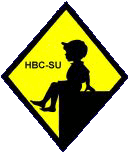
Figure 1.--This is the PE kit at my son's school. . |

|
I started at prep school at age 5. This was completely normal at the time. I've still got the termly reports from my prep school and they are all in the same format; there is no mention of a junior section of any kind. What has happened since is that private-sector schools take children from about age 3. The pre-prep section lasted up to age 7, and beyond that they were in the prep section to age 11. This sort of thing is, so far as I am aware, a relatively recent development - i.e. recent compared to when I was at school! Nowadays the lower years are called pre-prep, but they weren't in my day. Nearly all the private-sector schools near where I now live take children from about age 3 nowadays. Such schools fall into 4 groups; 1. up to 11; 2. up to 13; 3. up to 16; 4. up to 18. The major time for moves is at age 11 - the Common Entrance exam is rarely used in this area. I should add that all these schools are basically day schools, though one or two have a few boarders. The school my children went to is more or less nonselective in its intake to pre-preps, applying selection thereafter simply to limit numbers. A lot has changed in the nearly 40 years since I left school! Most of the change, I suspect, took place in the 22 years between when I left in 1969 and when my elder son started in 1991. The main change since then is that more private-sector schools have worked out that if you catch the kids at age 3 or so, you'll keep most of them until they fall out of the top end of the school.
I started at prep school at age 5. This was completely normal at the time. I've still got the termly reports from my prep school and they are all in the same format; there is no mention of a junior section of any kind. What has happened since is that private-sector schools take children from about age 3 (i.e., in practice, when they're out of nappies during the day). This may be called kindergarten and/or pre-prep. At the (private-sector) school my own children attended (age 3 to 16, so between the two boys from 1991 to 2007) the pre-prep section lasted up to age 7, and beyond that they were in the prep section to age 11. This sort of thing is, so far as I am aware, a relatively recent development - i.e. recent compared to when I was at school! Nowadays the lower years are called pre-prep, but they weren't in my day.
Nearly all the private-sector schools near where I now live take children from about age 3 nowadays. Such schools fall into 4 groups; 1. up to 11; 2. up to 13; 3. up to 16; 4. up to 18. The major time for moves is at age 11 - the Common Entrance exam is rarely used in this area. I should add that all these schools are basically day schools, though one or two have a few boarders. Almost all the private-sector schools in this area are mixed. I can think of very few that are single-sex. Just to complicate matters, there's one that accepts both boys and girls but teaches them separately until age 16, mixed thereafter. In many respects those that take pupils above the age of 11/13 provide the sort of education that the Grammar Schools provided (free!) forty or fifty years ago - in fact a few of them were Grammar Schools of that type, and opted for independence rather than a nonselective intake. The recently-retired headmaster of my sons’ school freely admitted that it aims to provide what Grammar Schools used to.
The school my children went to is more or less nonselective in its intake to pre-preps, applying selection thereafter simply to limit numbers (about 22 per class, one class per year up to age 11, two classes per year thereafter). There is, of course, covert selection by 1. ability to pay the fees and 2. (far more significant) the willingness of the parents to accept sacrifices so that their children get what we believe is a better education. The common characteristic of parents I know who send their children to private-sector schools is that they believe that the children will get a better education than in the public sector, and that this implies that some sacrifices must be made. The school can therefore rely on the parents being supportive.
The uniform at my sons’ school was qualitatively the same as mine – dark grey trousers, blazer (basically black, with coloured edges), white shirt, and so on. They were allowed to wear shorts in the Pre-Prep and prep departments, i.e. up to age 11. Both did so, both summer and (mostly) winter, as did some of their contemporaries. We ensured they had the choice. Winter coats were required to be plain and dark-coloured: this usually meant some sort of anorak. The general school policy on uniform was to keep the children looking, well, uniform, but not to worry too much about styles as long as these were not too outrageous. The girls’ uniform was the same as the boys’, except that they wore grey skirts rather than trousers, with black socks or tights. White socks were permissible but were generally only worn by prep-age girls. Throughout the time my sons were there, some girls wore ankle socks with bare legs all year round.
A lot has changed in the nearly 40 years since I left school! Most of the change, I suspect, took place in the 22 years between when I left in 1969 and when my elder son started in 1991. The main change since then is that more private-sector schools have worked out that if you catch the kids at age 3 or so, you'll keep most of them until they fall out of the top end of the school. Thus several that we couldn't consider in 1991 now take 3-year-olds. I suppose that eventually the public sector will have to catch up with the private sector in provision of before-school and after-school care (we could drop young children from 0800, and collect them up to 1730, for very modest fees - far cheaper than paying a child-minder!) Parents are demanding such facilities, especially where both parents have full-time jobs.
